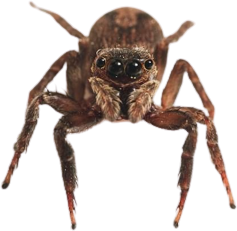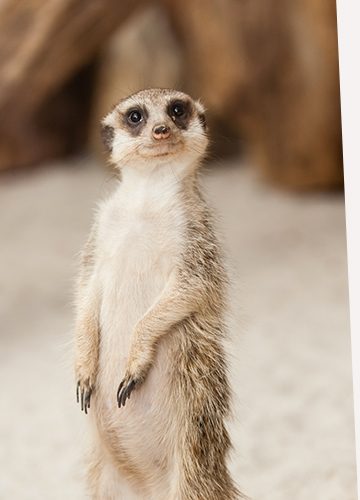When it comes to thinking about and considering nonhuman animals, we tend to connect most with the animals who are most like us. Mammals, especially primates, are generally considered to be the “closest” to us, and as such, the easiest to consider ethically. From there, as we move down the imaginary list, we might find other mammals (especially companion animals) higher up, wild animals somewhere in the middle (especially if they are seen as “symbolic” of certain human character traits), and animals we consume somewhere near the bottom — we don’t want to deal with the discomfort of relating to the animals that will be on our dinner plate.
Even further down the list of consideration — if they even make it onto the list at all — are invertebrates. As a category, “invertebrates” is almost uncomfortably broad, including everyone from bees to lobsters to snails to butterflies to ants. They are simply cold-blooded animals who have no backbone or spinal column. These facts alone seem to be enough for humans to view them as almost alien entities. Many people (and scientists) are not even willing to consider that invertebrates feel pain or have any kind of sentient experience of the world around them.
In the following Faunalytics Fundamental, we’ll explore the lives of invertebrates and the various worlds they inhabit, and make the case for their ethical consideration. Throughout the resource, you can click on links in the text or within the infographics to check our references and sources, and explore further. For further consideration, please check out our blog about what we included and what we left out.
Meet the Animals
The number of invertebrate species is staggering. There are about 1.25 million species of invertebrates, just that we’ve identified so far. Comparing this to the number of vertebrate species we’ve identified (just 60,000), invertebrates make up 97% of all species on the planet — and there are likely many, many more species that we haven’t identified yet. Below, we look at some of the broad categories of invertebrates using some of their most well-known species.

Pollinators
While most people know about bees, there are 200,000 species of pollinators, including everyone from bees to ants to beetles to butterflies.
- Bringers Of Value – Pollinators provide crucial support for agriculture, to the tune of $18 billion annually in the U.S. alone
- Declining Numbers – Pollinators are vital for global animal survival, but about 40% of invertebrate pollinator species are threatened with extinction
- Leave The Leaves – Many pollinators spend the Winter on or in the ground — and benefit from humans leaving brush and debris on the ground over the colder months

Arachnids
Almost all spiders carry venom of some kind, but only 25 species (0.05%) have venom that would affect humans.
- Stronger Than Steel – Spider silk — made of thousands of nanostrands — is 5× stronger than steel
- The Eyes Have It – Spiders have crude color perception, but they have the ability to see into the ultraviolet spectrum far beyond what humans can see
- Socially Special – Most spiders are antisocial within their own species, except Social spiders, who are experts at living cooperatively

On Land
There are approximately 30 million insect species, and they make up the largest proportion of biomass on earth.
- A Wide Span – Earthworms live about 2 years, though they can live up to 8 years in ideal conditions
- Around The World – Beetles have evolved over 300 million years to live in just about every climate and corner of the earth, including polar ice caps
- Relatives In The Sea – Slugs and snails are actually mollusks, which means they are related to clams and mussels

In the Sea
Lobsters are usually killed around 5-7 years old, but can live up to 100 years.
- Ink & Camouflage – Octopuses shoot a dark ink when threatened, and can change color to help get out of bad situations
- The Hairs Have It – Crabs and lobsters perceive touch, sound, smell, taste, odour, and temperature using small hairs on their body
- Millions To Make One – What we call coral reefs are actually made of millions of small individual animals called coral polyps
Attitudes
Generally speaking, humans do not think very fondly of many invertebrates, if they even think of them at all. Our broad dislike of invertebrates is usually justified on the basis that they may be “pests” like ants, that they may sting us like wasps, or that we eat them like shrimp. These attitudes are often rooted in beliefs that invertebrates are, by their very nature, “lower-order” animals. While some people may recognize that certain species (like bees and other pollinators) are beneficial to us, their value is tied to their utility, and rarely stretches beyond it.
While we know that attitudes towards farmed animals have changed over time, far less work has been done to trace the trajectory of our perceptions of invertebrates. However, as we increasingly look towards insects as a potential “protein source” (more on that below), we’ll need to better understand how people think of these animals and what factors can help shift their opinions to be more positive.
The World Needs Insects
When we think of invertebrates, it’s likely that we think of insects first and foremost. Though it’s not inaccurate, it’s easy to see why we so often dismiss the invertebrates: they inhabit the realm of pests and nuisances, and most people’s only thought of them is how to get them out of their lives. Fortunately, more and more people recognize that insects are not only worthy of our attention, but are in fact crucial to the survival of ourselves and the planet.
Below, we hone in on one particular branch of the insect world: that of pollinators. Pollinators do the extremely important work of helping plants to reproduce; pollination is a form of labor we can’t reasonably or readily do ourselves, and it makes everything from agriculture to foraging to raising animals possible. Without pollinators, many types of fruits, vegetables, and trees would simply die out, unable to continue their reproductive cycles. That’s how important pollinators are to our collective survival.
On the Land and In the Sea
Of course, not all invertebrates are insects. There are many, many species who are bigger and more noticeable in our day-to-day lives, some of whom we consume regularly, such as mussels or lobsters. On land, we have animals such as worms, snails, and slugs that fall into this category. Below, we look beyond the insect world, at invertebrates on land and in the sea.
As we can see in the above collection of statistics and facts, invertebrates from both the land and the sea do a lot more than we give them credit for, and face a range of threats to their survival that are in our power to stop. Below, we see how this dynamic extends into other areas, including experimentation and consumption for food.
In The Laboratory
Invertebrates are some of the most commonly used animals in animal experimentation, and their use is both economical — many individuals can be housed and tested at a fraction of the cost of housing mammals of any kind — and strategic — the general public has virtually no issue with their use in that way. Indeed, this double-whammy means that invertebrates likely make up a large percentage of the total animal individuals used in laboratories around the world. And yet, we rarely (if ever) think of them as “lab animals.”
It seems unlikely that the use of invertebrates in laboratories will end any time soon. Advocates have made some inroads with campaigns for the protection of primates, cats, and dogs used in labs — but gaining traction in the fight for laboratory birds, mice, rats, fishes, and insects seems much more difficult. Still, if we take the overall concept of sentience seriously, it’s a cause we should keep pushing for.
On the Menu
Above, we touched on the use of land and sea invertebrates for food. Now, we turn to the subject of entomophagy — a fancy word for the practice of eating insects. We must note from the outset that eating insects is something that’s been around for a very long time. Today, however, entomophagy has entered a new, technologically (and some would say ecologically) driven phase that is important to explore.
The widespread adoption of insect proteins will likely be hindered in numerous ways, not the least of which is many people’s general queasiness around the concept of “eating bugs.” Still, we can see in the slides above that there are already a mind-boggling number of individual beings affected by insect farming, and that any further growth of this industry has the potential to affect exponentially more.
This Faunalytics Fundamental has provided a visual overview of our broad and complex relationships with invertebrates, but we have just barely scratched the surface. Be sure to check out the accompanying blog post to understand how we made our choices of what to include and what to leave out.
Whether you’ve ever been involved in advocacy for invertebrates, or are already a seasoned veteran, we think you’ll find the data above useful in a variety of ways, and we’d love to hear how you use it in your work.
We hope the data presented here also encourages advocates to ask questions about how to be more effective and how best to invest our limited advocacy resources:
- Insect-eating may seem like an intractable practice, but even at smaller scales it involves the deaths of billions or trillions of individuals. How should advocates approach this?
- Are there ways to bridge the gap between discussions of land animal and fish sentience, and that of invertebrates?
- Considering how intractable the question of invertebrate sentience continues to be, are there ways to advocate effectively for invertebrates without employing sentience arguments at all?
These are questions advocates should think about and potentially research further.
There is so much more work to be done to give animal advocates the insight they need to choose the most effective ways to help animals. Please donate generously now to help us keep bringing you and other advocates this crucial information.
Faunalytics would like to thank the Center For Effective Altruism
for their generous support of our Invertebrate Fundamentals.



